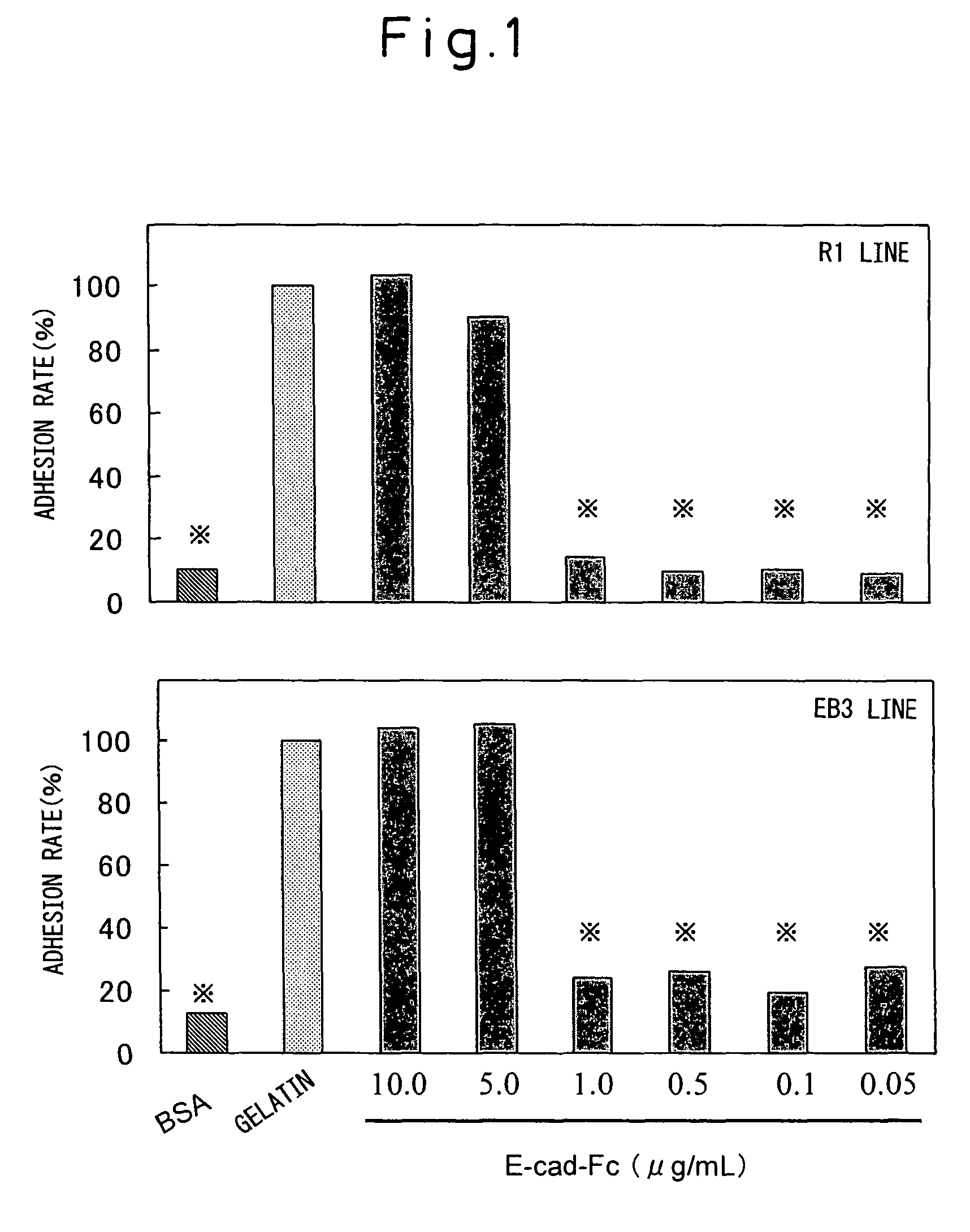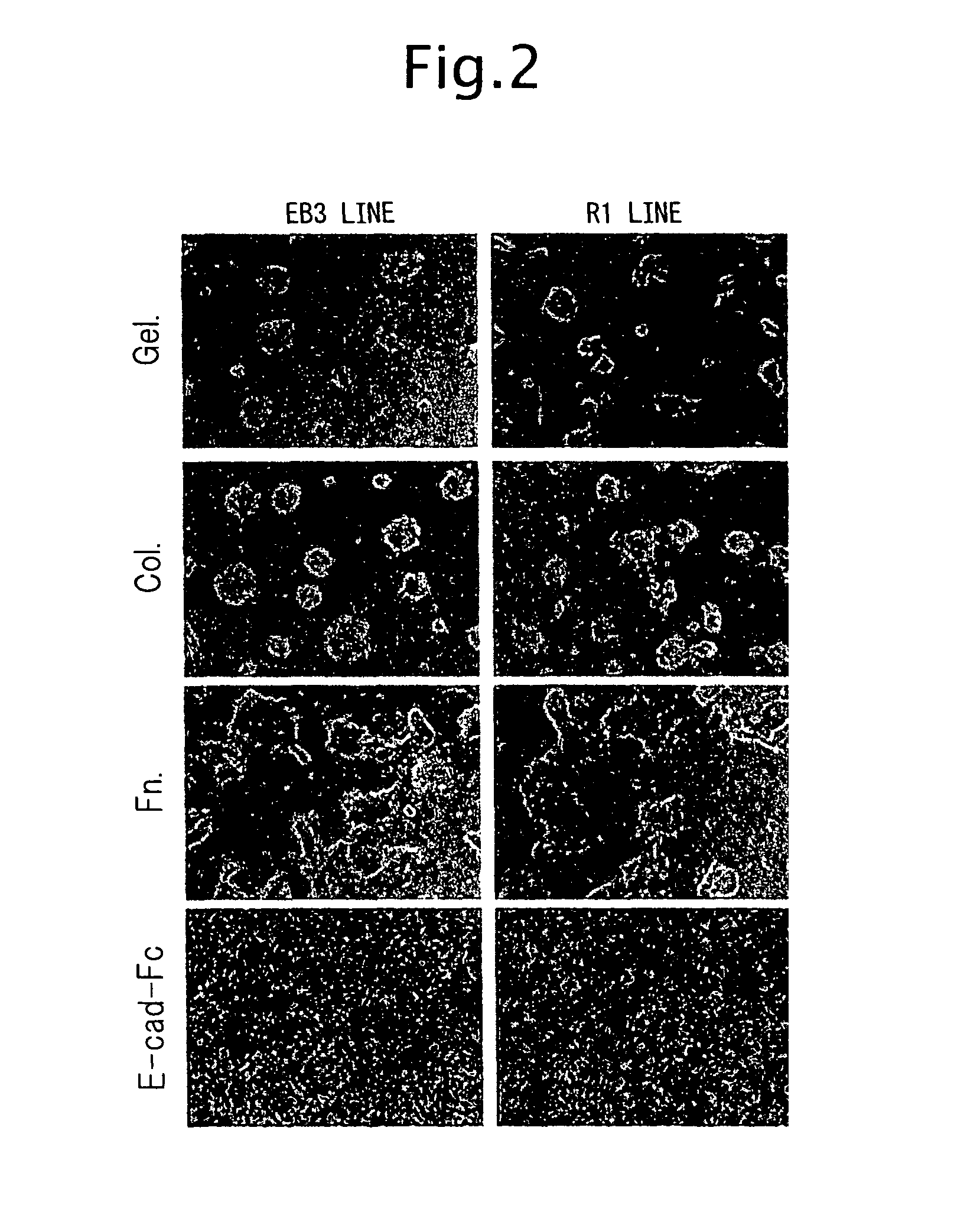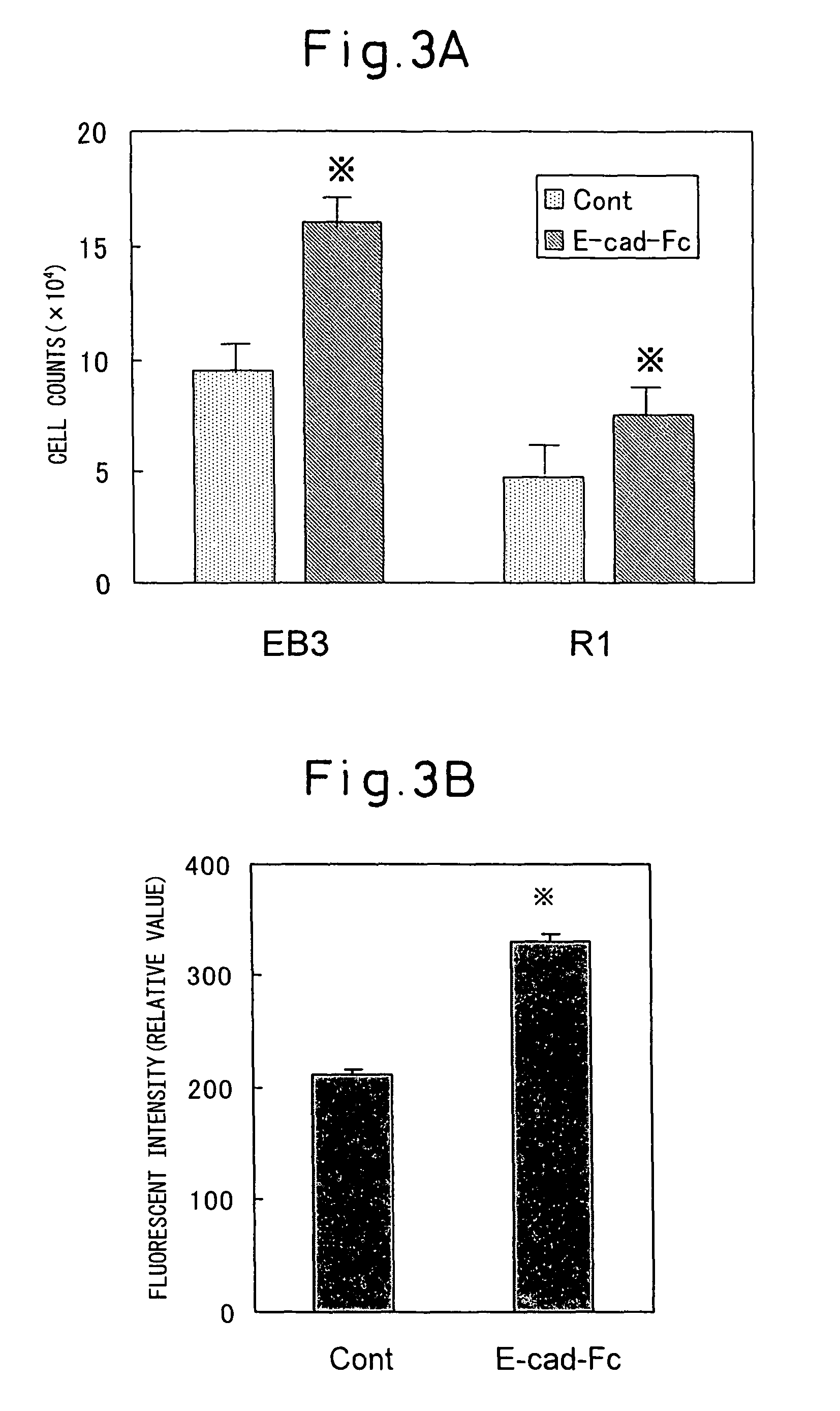Pluripotent stem cell growing method
a stem cell and gene transfer technology, applied in the field of growing methods and gene transfer methods for pluripotent stem cells, can solve the problems of low proliferation potency of stem cells, inability to obtain living tissues from stem cells, and inability to culturing methods employed for these classical es/eg cells. to achieve the effect of increasing the cell proliferation potency and increasing the efficiency of gene transfer
- Summary
- Abstract
- Description
- Claims
- Application Information
AI Technical Summary
Benefits of technology
Problems solved by technology
Method used
Image
Examples
example 1
Preparation of Recombinant E-Cadherin Protein
[0128]The methods for construction of a vector for expression of a fusion protein comprising the murine E-cadherin extracellular region and IgG Fc portion (IgG / Fc) (hereinafter referred to as “E-cad-Fc”), and for production and purification of the protein were based on methods reported by the present inventors (Nagaoka et al., Biotechnol. Lett. 24:1857, 2002 (Non-patent document 6); Protein Eng. 16:243, 2003 (Non-patent document 7)). First, an extracellular domain (E-cad-ECD)-coding DNA fragment (corresponding to amino acid residues 1-699) from E-cadherin cDNA was amplified using as template cDNA containing the full-length sequence for murine E-cadherin (allotted by RIKEN; RDB No. 1184) as template. A DNA fragment coding for murine IgG / Fc was isolated from cDNA obtained by preparing mRNA from a murine IgG1-expressing hybridoma and performing reverse transcription with Reverse Transcriptase. After confirming the nucleotide sequences of bot...
example 2
Adhesion of ES Cells to E-Cad-Fc Plate
[0131]The adhesion of ES cells to a cell culturing plate coated with the E-cad-Fc protein (hereunder, “E-cad-Fc plate”) was examined. A PBS-diluted solution of the E-cad-Fc protein was poured into untreated polystyrene culturing plates of different sizes and treated for coating overnight at 37° C. After rinsing and before seeding of the cells, blocking treatment was performed for 1-2 hours with 0.1% BSA solution to prevent non-specific adhesion of the cells. As a control, plates coated with BSA (0.1%), gelatin (0.1%), type I collagen (0.01%; KOKEN) or fibronectin (5.0 μg / mL; KOKEN) were used.
[0132]The ES cell lines used were EB3 cells (provided by Prof. Hitoshi Niwa of RIKEN), R1 cells (Nagy et al., Proc. Natl. Acad. Sci. USA 90:8424, 1993) and 129SV cells (obtained from Dainippon Pharmaceutical Co. Ltd.), and the experimental results showed no differences between the different ES cell lines. These ES cells were passaged according to the methods...
example 3
Culturing of ES Cells Using E-Cad-Fc Plate
[0137]In order to examine the proliferation potency of ES cells on an E-cad-Fc plate, ES cells passaged under ordinary conditions were recovered and 500 of the ES cells were seeded on an E-cad-Fc plate or a gelatin plate (96-well plate) and cultured for 3 to 4 days. After rinsing the cells with serum-free medium, the cell counts were measured with Alamar Blue in the same manner as above. As a result, the number of ES cells cultured on the E-cad-Fc plate with respect to the number of ES cells cultured on the gelatin plate by day 3 of culturing was significantly higher for both the EB3 and R1 cell lines (see FIG. 3A). Also, the cell counts of the E-cad-Fc plate groups with both ES cell lines were approximately 2 times greater by day 4 of culturing. When the ES cells were recovered after four similar passages and the counts were recorded, the numbers of E-cad-Fc plate-cultured ES cells were more than 3-5 times greater than those cultured on the...
PUM
| Property | Measurement | Unit |
|---|---|---|
| concentration | aaaaa | aaaaa |
| concentration | aaaaa | aaaaa |
| concentration | aaaaa | aaaaa |
Abstract
Description
Claims
Application Information
 Login to View More
Login to View More - R&D
- Intellectual Property
- Life Sciences
- Materials
- Tech Scout
- Unparalleled Data Quality
- Higher Quality Content
- 60% Fewer Hallucinations
Browse by: Latest US Patents, China's latest patents, Technical Efficacy Thesaurus, Application Domain, Technology Topic, Popular Technical Reports.
© 2025 PatSnap. All rights reserved.Legal|Privacy policy|Modern Slavery Act Transparency Statement|Sitemap|About US| Contact US: help@patsnap.com



